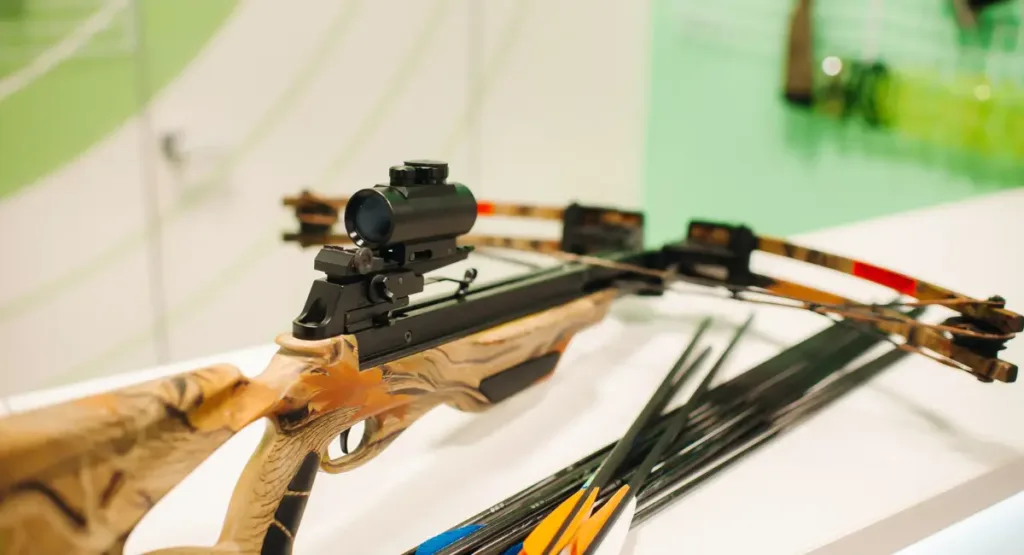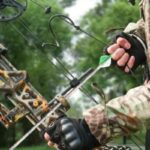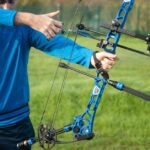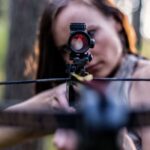A crossbow has been used for centuries as a weapon of war, a sport tool, and as food and shelter. The crossbow has become an essential tool for archery enthusiasts and hunters today. It offers precision, power, and the kind of challenge that makes every shot worthwhile. A crossbow’s integral parts are crucial to your success on the field, whether you’re a newcomer or an experienced veteran.
The aim of this guide is to describe the key parts of a crossbow. We will examine their individual roles, how they work together, and what you need to know to maintain your crossbow properly.
5 Key Parts Of A Crossbow
1. Stock and trigger mechanism
The stock of any crossbow provides the foundational structure and supports for the entire bow, as well as housing the trigger mechanism, a set of parts designed to release the drawn string in a precise and accurate manner. The stock serves as the center of gravity in the crossbow, providing the load bearing structure for the entire bow.
Description and function
As a stable platform, the stock plays an important role in improving accuracy and absorbs the energy released during shooting The stock must be both sturdy and comfortable to hold, so manufacturers must consider the materials and design of the stock when creating crossbows.
Of all the components of the firearm, the trigger system is arguably the most crucial component for reliable performance. It is composed of many different seals, springs, and levers. This mechanism drives the shooting process.
Importance of durability and comfort
It is important to prioritize stocks made of robust, high-quality materials, such as synthetic composites, aluminum, or carbon fiber, when purchasing a crossbow, since they will last for a long time. By utilizing ergonomic designs that fit the shooter’s body, fatigue is reduced during extended use, leading to more consistent shooting and steady aim.
2. Limbs and string.
During drawback, the crossbow limbs store energy that is transferred to the arrow when the bow is released. Crossbow limbs are the “arms” of the bow. When the arrows are released, the string propels them forward. It carries the tension of the draw and acts as the link between the limbs.
Their Roles Explained
The two main types of crossbow limbs are recurve and compound, and each has its own advantages. The recurve bow limbs store less energy in relation to their length, but are simpler and often more durable than compound bows. A compound limb’s intricate cable and pulley system makes it more powerful and energy-efficient to draw.
It is crucial to keep the limbs and strings in good shape by waxing them frequently to prevent fraying. In addition, inspecting the limbs for any signs of damage will ensure that the bow remains structurally sound.
3.Crossbow Scope and sight
In order to strike your target with confidence, a crossbow must be equipped with a reliable scope. These aiming devices allow you to adjust for distance and windage, so you can make precise shots no matter what the weather is like.
Types of Scopes and Sights
Technology has improved the reticles of crossbow scopes, offering illuminated ones for low-light conditions as well as a wide range of magnifications and reticle styles. The sights can be fixed or adjustable, with some models combining both horizontal and vertical adjustments to provide maximum flexibility.
Importance of accuracy and adjustments
A properly selected scope or sight is essential for reliability and accuracy. Using high-quality glass and precise construction contributes to a clear, consistent image, while quickly and easily adjusting the knobs and screws enables the scope or sight to be calibrated quickly and accurately.
4. Clocking mechanism
The work of drawing the crossbow string is no small feat, which is where the cocking mechanism comes to the aid of the crossbow shooter. By using this component, shooting is made easier and more efficient, enabling you to draw the string with more ease and with repeatable accuracy.
Types of cooling mechanisms
Several types of cocking mechanisms are available, ranging from manual rope and crank mechanisms to more advanced integrated mechanisms that come with the bow as standard equipment. It is true that each has its own advantages, with manual devices offering simplicity and weight savings while integrated systems offer a high degree of convenience and consistency to the user.
Safety Considerations and Proper Usage
Crossbows that are improperly cocked can be dangerous. Always follow the manufacturer’s instructions for using a specific cocking mechanism, and be sure to follow safety precautions. Make sure you align the string with the rail properly and don’t force it into place.

5. Arrow Rest and Quiver
You may think the arrow rest and quiver are minor accessories, but they can make a significant difference to the shooting experience. The arrow rest has the role of supporting the arrow until it is released while the quiver offers storage and easy access to extra arrows.
Functions and Types
An arrow rest can be a simple support, a drop-away rest that falls out of the way when released, or a containment-style rest that keeps the arrow from falling off, ensuring a clean shot every time. Crossbow quivers, the shooter’s body, or the ground can be used to attach them.
Impact on shooting accuracy
In order to get an accurate shot, it’s imperative to pick a quiver that secures arrows silently and securely. The choice of an arrow rest and quiver can influence arrow speed, flight trajectory, and accuracy. Additionally, you should choose an arrow rest that complements your shooting style, whether you shoot from a tree stand or on the open ground.
Conclusion
As a crossbow user, it is extremely important to understand the parts of a crossbow and its functions, not only for ensuring safe use but also for improving your shooting skills. Maintaining your crossbow regularly is essential to its longevity. Choosing the right components based on your needs and preferences can make all the difference when it comes to the performance of your crossbow.
The following guide should provide you with all the information you need about crossbows, whether you are looking to purchase one for the first time or give it an upgrade.
Recent Posts
- Unveiling the Best Compound Bow For Beginners – Reviews and Recommendations
- The best crossbow under $500 for 2024: Reviews and Recommendations
- Top 10 Best Selling Bow Sets: Make Your Archery Passion a Reality
- The Best Compound Bow under 500 | Reviews & Recommendations
- Choosing the Best Bow Sight: A Comprehensive Guide
- Getting the Best Crossbow Scope: Enhancing Your Precision







